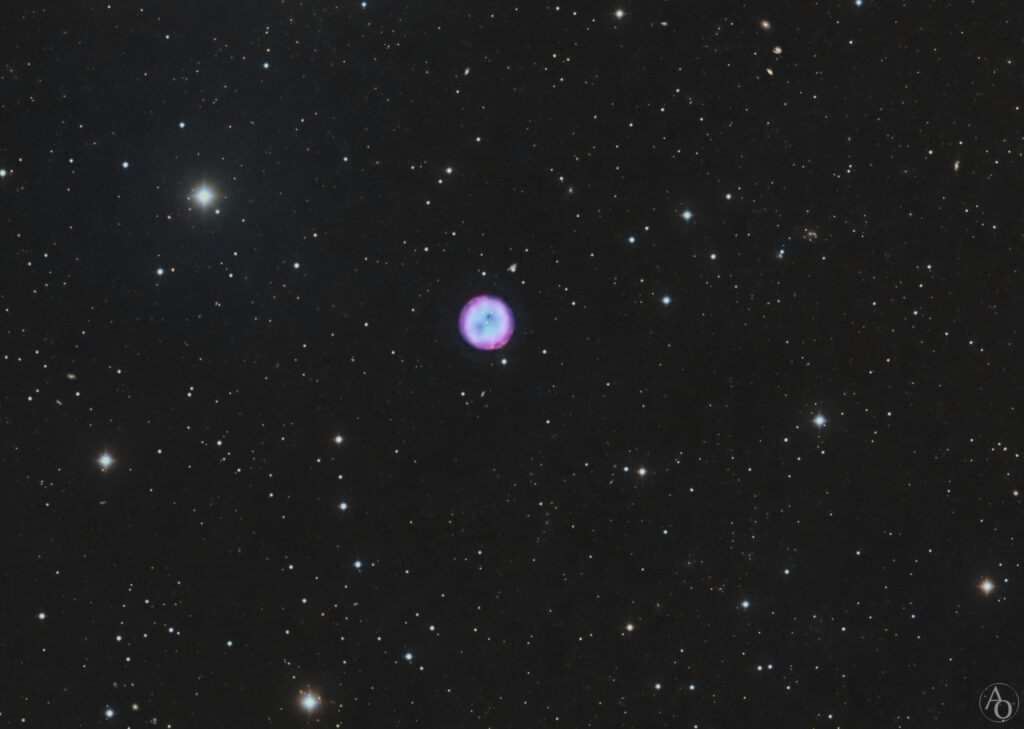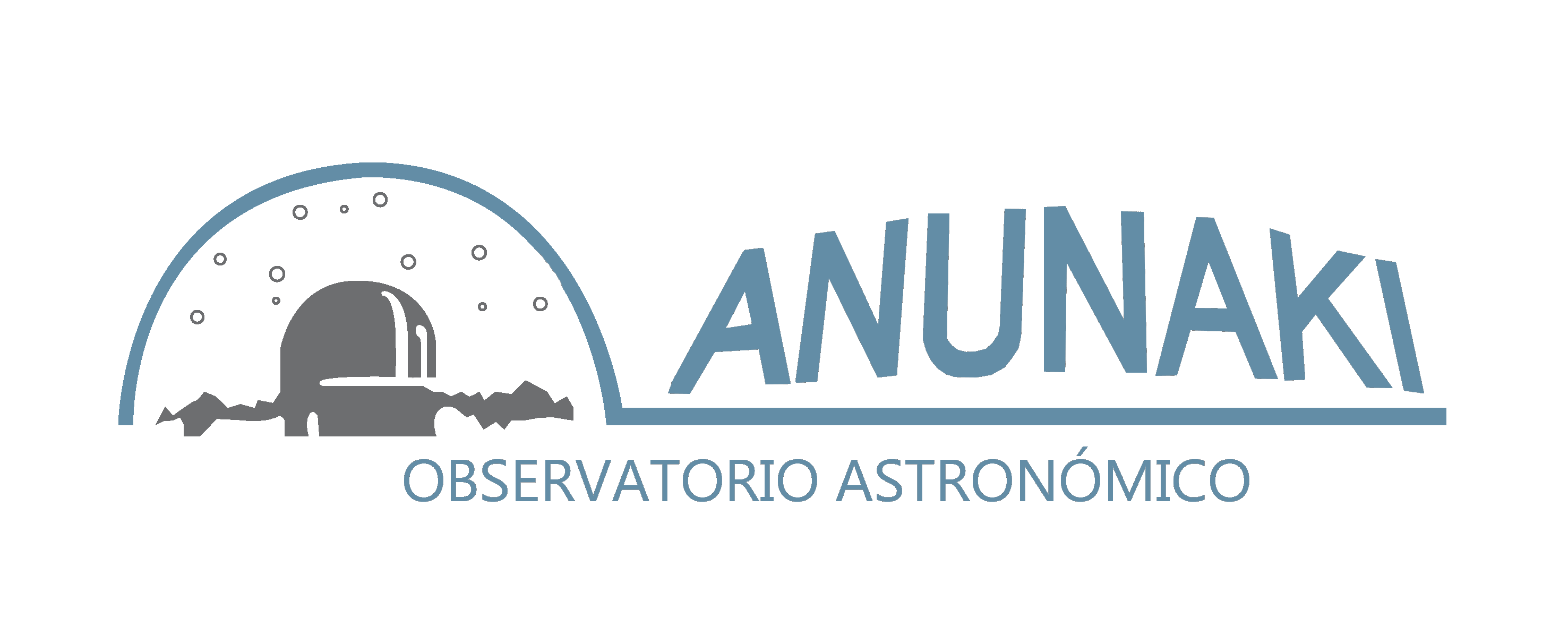The Owl Nebula, also known as Messier 97 or NGC 3587, is a planetary nebula located in the constellation Ursa Major. It was discovered by Pierre Méchain in 1781. The name Owl Nebula was coined by Lord Rosse, who first used it in 1848. In 1866, William Huggins recognized its nature as a gaseous nebula from the observation of its spectrum. It is located at an uncertain distance of 2600 light years from Earth.

M97 is considered one of the most complex planetary nebulae. Its appearance has been interpreted as a toric cylindrical cover viewed obliquely, so that the ends of the cylinder are associated with areas poor in expelled material, corresponding to the eyes of the owl. This cover is surrounded by a fainter and less ionized nebula.
The central star, magnitude 16, has an approximate mass of 0.7 solar masses, while the mass of the nebula itself is estimated at 0.15 solar masses. The nebula formed about 6,000 years ago.

Technical data of the acquisition:
Baader Blue (CMOS-Optimized) 36 mm: 20×300,″(1h 40′)
Baader Green (CMOS-Optimized) 36 mm: 20×300,″(1h 40′)
Baader H-alpha 6.5nm (CMOS-Optimized) 36 mm: 30×900,″(7h 30′)
Baader O-III 6.5nm (CMOS-Optimized) 36 mm: 20×900,″(5h)
Baader Red (CMOS-Optimized) 36 mm: 20×300,″(1h 40′)
Baader UV/IR CUT Luminance (CMOS Optimized) 36 mm: 85×300,″(7h 5′)
Time integration:
24h 35′
